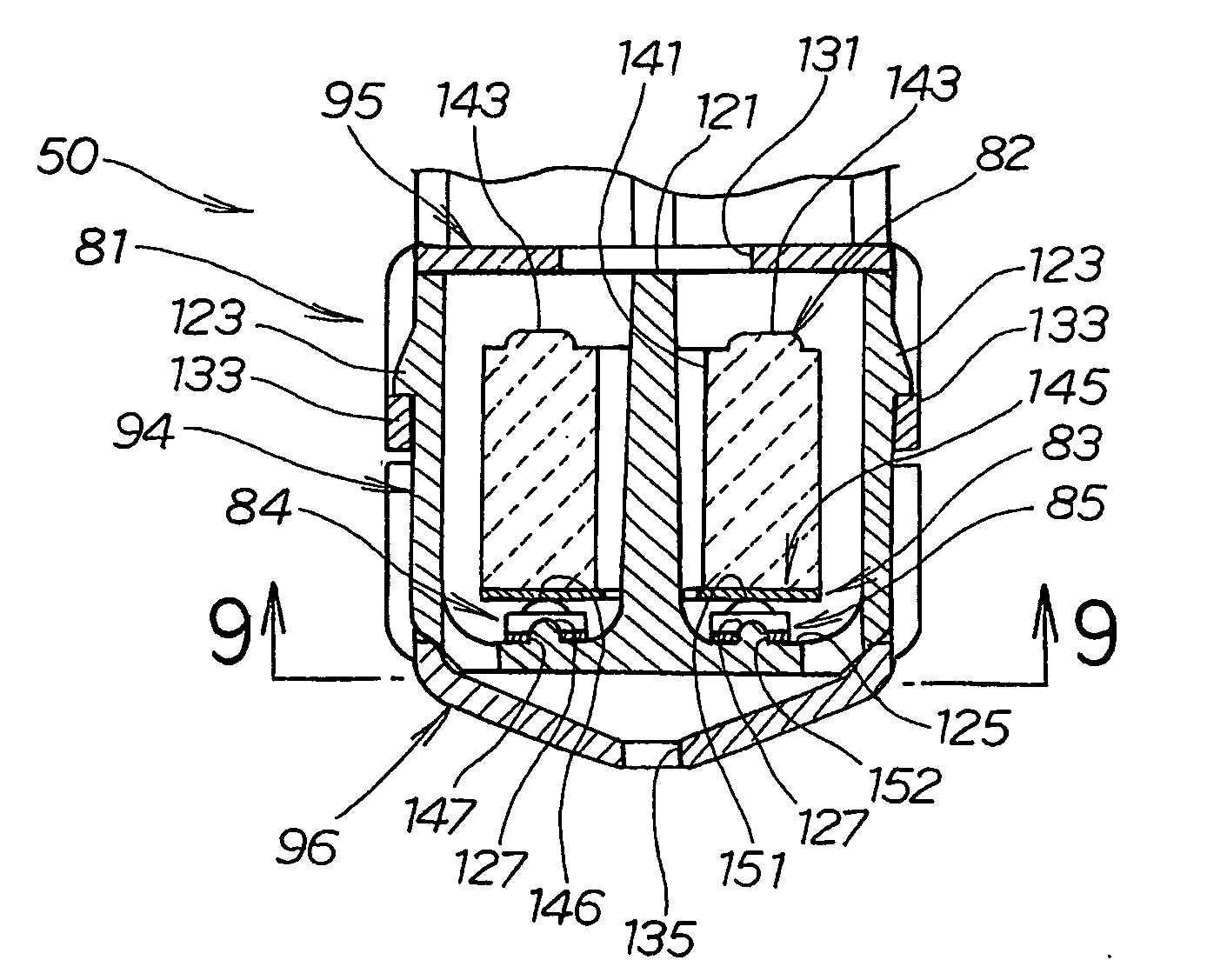Lead-Free Solder Paste and Its Use
a solder paste and lead-free technology, applied in the direction of soldering apparatus, manufacturing tools, transportation and packaging, etc., can solve the problems of molten solder leakage, short circuits and other problems, and achieve high bonding strength, good wettability of solder, and high reliability of solder connections
- Summary
- Abstract
- Description
- Claims
- Application Information
AI Technical Summary
Benefits of technology
Problems solved by technology
Method used
Image
Examples
example a
[0068]The melting points (solidus temperature and liquidus temperature) and volumetric expansion at the time of melting (the ratio of the volume at the liquidus temperature to the volume at the solidus temperature) of the alloys shown in Table 1 were measured.
[0069]Solder powder of these solder alloys (average particle diameter of 25-35 μm) was mixed in the following proportions with flux A having the composition shown below (% indicates mass %) to prepare a solder paste, and self-alignment properties were tested. The results are also shown in Table 1. The bisphenol A epoxy resins used in the examples were all liquid monomers (bisphenol A diglycidyl ether).
TABLE 1MeltingSelf-alignment:Compositionpoint (° C.)ExpansionNumber ofNo.BiSnAgCuSbInZnNiGePothersolidusliquidus(%)NG (out of 20)Examples170rem1391800.50280rem139210−0.42385rem139215−0.63498rem139262−1.75580rem0.1139211−0.43680rem0.1138214−0.32780rem0.1138209−0.42880rem0.1139210−0.42980rem0.10.1139210−0.311080rem0.10.1138216−0.22C...
example b
[0084]In addition to the above-described flux A, fluxes B and C which used different types of curing agent were prepared. For comparison, flux D, which contained a cresol novolak epoxy resin and an amine curing agent, was prepared.
[0085]These fluxes were mixed with powder (average particle diameter of 25-35 μm) of solder alloys (a Bi—Sn binary alloy or Sn) to manufacture a solder paste. The results of an oozing test and a solder ball test for each solder paste and a test of leaching rate of the solder alloys which were used are shown in Table 2.
TABLE 2CompositionMelting(wt %)Fluxtemperature (° C.)OozingSolderLeachingNo.BiSntypesolidusliquidustestball testrate (μms−1)Examples170remA139180◯20.32280remB139210◯20.27385remC139215◯20.21498remA139262◯20.09Comparative180remD139210X40.27Examples2100 remD270270◯40.02357remA138139X20.43457remD138139◯40.435rem100D231231X41.88
[0086]1. Flux Composition (Mass Percent)
[0087]Flux B (Example of the Present Invention)
polymerized rosin36%bisphenol A ep...
PUM
| Property | Measurement | Unit |
|---|---|---|
| mass % | aaaaa | aaaaa |
| mass % | aaaaa | aaaaa |
| melting point | aaaaa | aaaaa |
Abstract
Description
Claims
Application Information
 Login to View More
Login to View More - R&D
- Intellectual Property
- Life Sciences
- Materials
- Tech Scout
- Unparalleled Data Quality
- Higher Quality Content
- 60% Fewer Hallucinations
Browse by: Latest US Patents, China's latest patents, Technical Efficacy Thesaurus, Application Domain, Technology Topic, Popular Technical Reports.
© 2025 PatSnap. All rights reserved.Legal|Privacy policy|Modern Slavery Act Transparency Statement|Sitemap|About US| Contact US: help@patsnap.com



